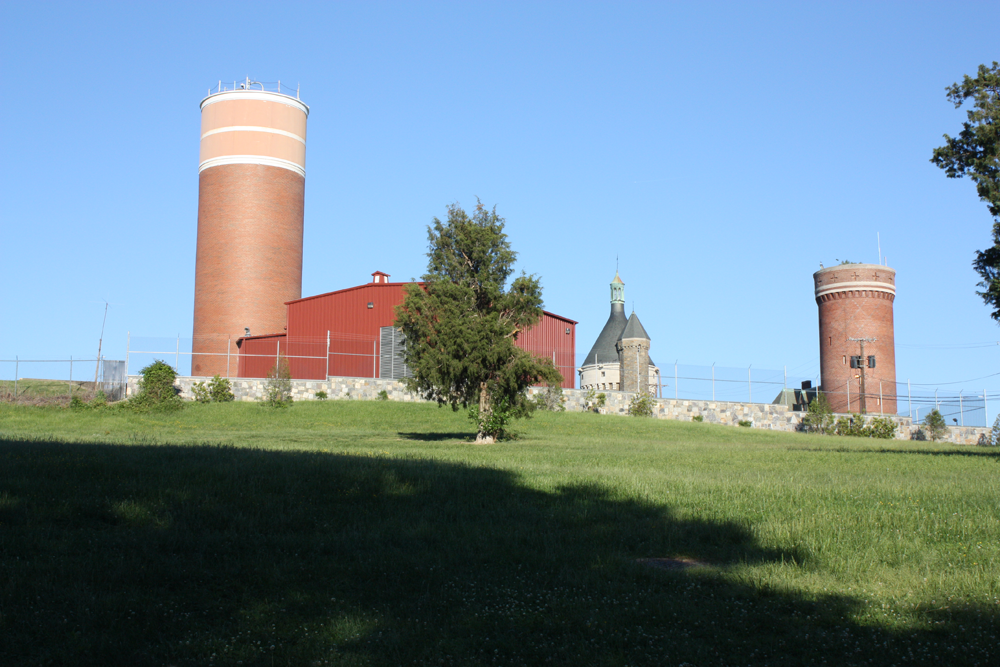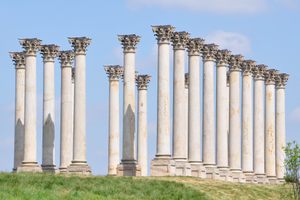About
At the highest natural point in the District of Columbia stood a fort that played an integral part in keeping the Confederate Army out of the U.S. capital during the only Civil War battle to take place in Washington, D.C.
Fort Reno stood in present-day neighborhood of Tenleytown at 409 feet above sea level. The fort was one of several that ringed the District to guard against Confederate attacks, but these forts went severely undermanned when Union General Ulysses S. Grant moved many of their troops to Petersburg, Virginia to support his Overland Campaign. Hearing about the state of the forts, Confederate General Robert E. Lee ordered General Jubal A. Early to attack the capital from the north. From July 10th through the 12th, 1864, troops and artillery from Fort Reno and nearby Fort Stevens engaged the Confederates, until Early finally retreated. He told his officers, "We didn't take Washington, but we scared Abe Lincoln like Hell."
During the war, a community of formerly enslaved people lived around the fort, many assisting in its construction. After the war ended, the fort was dismantled and the site was made into a reservoir with an accompanying sandstone castle. The original owners of the land around the reservoir returned and eventually had the land subdivided into lots they called Reno City. Eventually, the neighborhood became a community of primarily Black families.
As the District of Columbia street grid advanced north in the early 20th century, plans were formulated to replace Reno City with a park and high school. The changes were part of a general plan for segregation of residents in the northwest quadrant of the District of Columbia. Despite efforts by the residents and prominent African-Americans, by the 1940s nearly all of the original houses were gone. Today little evidence remains of their history other than a lonely fire hydrant, a few foundation stones, and the Jesse Reno School east of the reservoir.
A separate plan to construct a vast circular park at the Fort Reno, circling the reservoir and taking advantage of the views, was put forward by the McMillan Commission, especially Frederick Law Olmsted Jr. This plan never came to fruition.
The reservoir and castle are fenced and off-limits to the public; however, the surviving highest natural point, just off of Nebraska Avenue on top of a small hill, was marked with a plaque in 2007.
During the Cold War, Fort Reno became host to "Cartwheel," one of seven government sites to be used in the event of a nuclear attack. These were tall, cylindrical cement structures built to support the continuity of the Federal Government in the event of a nuclear attack. Each of these structures was constructed to have line-of-site to its nearest neighbor for microwave communications.
In the 1960s, rock concerts were held in the southwest corner of the park. Eventually, a stage was built for these concerts farther east in the park. The stage still exists today.
Related Tags
Community Contributors
Added By
Published
June 17, 2014
Sources
- http://en.wikipedia.org/wiki/Fort_Reno_Park
- http://www.civilwar.org/battlefields/fort-stevens.html
- http://www.washingtonpost.com/wp-dyn/content/article/2008/04/17/AR2008041703859.html
- http://blog.historian4hire.net/2010/07/15/coldwarsites/
- https://www.washingtoncitypaper.com/news/article/20981322/the-battle-of-fort-reno
- https://www.loc.gov/resource/g3851bm.gct00134c/?sp=35&r=-0.071,0.001,1.097,0.709,0



























